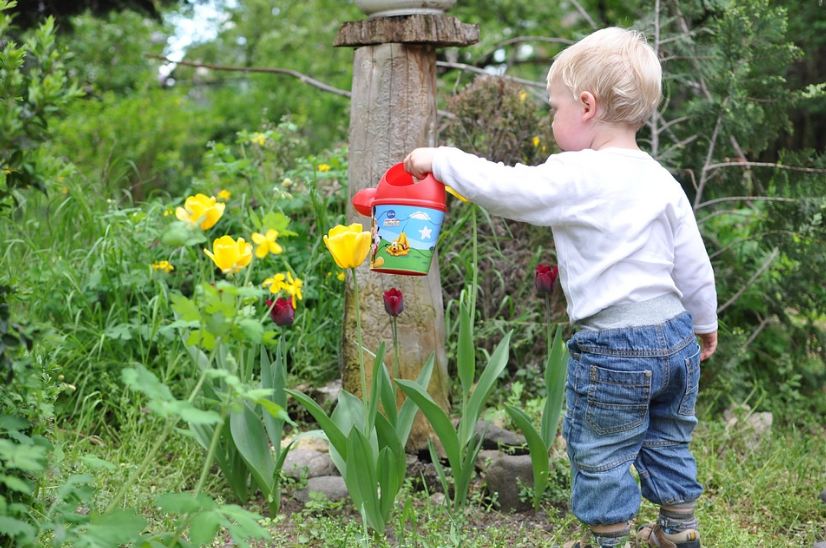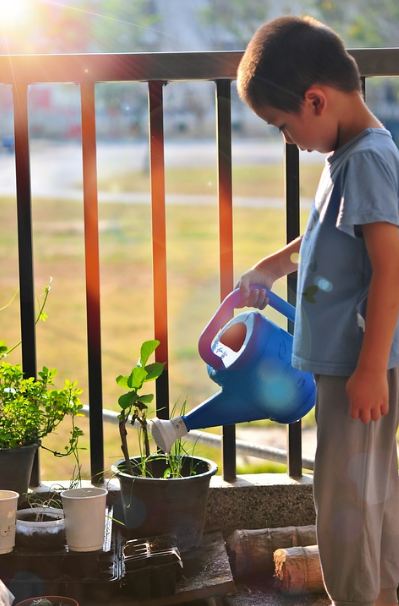Children enjoy hands-on learning, are curious, and enjoy playing in the dirt. Working in a garden allows a kid to feel the gratification of tending after something over time while also getting a firsthand view of the life cycle.
Gardening with young children teaches them an essential life skill that is usually overlooked in traditional school curricula. It’s also an excellent approach to instill environmental awareness in children by allowing them to investigate the workings of nature.
Top 14 Crops to Plant With Children
It’s rewarding to witness children’s enthusiasm and self-esteem increase as their gardening efforts produce positive outcomes when they’re introduced to gardening at a young age. Although many crops are excellent for young gardeners, these are the top 14 crops with short growing seasons, are relatively easy to grow, and are enjoyable to harvest.
- Bush beans
- Carrots
- Cherry tomatoes
- Corn
- Green onions
- Lettuce/mescluns
- Nasturtiums
- Potatoes
- Pumpkin
- Radishes
- Snow peas
- Strawberries
- Sunflower
- Watermelon
- Zucchini
Tips for Gardening With Children
Reuse the Sandbox
Consider transforming the old sandbox into a garden bed if your children have outgrown it. This provides youngsters with a sense of ownership over a familiar space while also encouraging responsibility for the gardening task.
A productive garden bed, of course, requires plenty of sunlight and soil that is clear of tree roots. If the growing conditions aren’t ideal, the sandbox may need to be relocated.
Allow Children to Have Their Own Garden Beds
Make sure each youngster has their own plot, whether you use ground plots, raised beds, or containers. Keep it as small as possible for young children. Their plots should be right in the middle of the action, with the best soil and sunlight. This will help them achieve their objectives.
Provide Them With Serious Tools
Inexpensive plastic gardening tools made for children are worse than none at all; they break easily and annoy the user. It might be challenging to find appropriate tools for kids, particularly work gloves that suit a little hand.
You may quickly saw a bit of the handle off several garden equipment, such as a hoe or a shovel. Allow the young ones to use your tools if necessary; by doing so, you’re recognizing the value of the work they’re performing.
Start From Seeds
While buying starters is a convenient shortcut, children will learn more by witnessing the growing process from seed to fruit. Taking time to sprout seeds and nurture tiny seedlings is an essential aspect of the gardening process.
Seeds must be started inside in a warm environment. They can be transferred into containers until ready to set out, or you can set them in a cold frame on top of the garden bed once they have sprouted.
Keep Them Involved Throughout the Process
When children comprehend the context of their actions, they learn more effectively. They’ll understand that gardening can be enjoyable, but it’s also beneficial to the family’s well-being. Make sure that youngsters pick and prepare their crops for the table alone, in addition to planting and cultivating their garden beds, no matter how big or small the contribution.
When Everything Else Fails, Make a Scarecrow
When it comes to gardening, the best time to engage children is when they are in the mood for it. Allow them to make a scarecrow if their interest wanes or the garden duties grow tedious.
This pastime contributes to the gardening effort and offers an added set of interest to the garden area. Also, it serves as a reminder to the child about the importance of garden crops.
Cheat a Little
Depending on the child’s age, you may be required to assist ‘behind the scenes.’ Not every garden task is enjoyable, and the youngster may not be available for all chores at all times.
You might have to go out late at night to pick a few snails off the lettuce or be the one to rush out and reposition the sprinkler. They don’t need to know be informed about every small bit of assistance you provide; the critical thing is for the youngster to feel like they own the plot.
Show Off Their Work
When giving your friends ‘garden tours,’ make sure to point out the kid’s beds. Send their grandparents a photo of their harvest. Attention to a project is the most powerful motivator for young people to stay interested in it.
Eat the Fruits of Your Labors
When the plants they grew materializing on the dinner table, children gain a firsthand understanding of the food cycle. Allow your child to assist you in the kitchen by cooking and preparing a delicious dinner. Scrub carrots for a quick snack, make a Margherita pizza with basil and tomatoes, or slice some strawberries for your breakfast cereal. Much better, invite guests to the meal or donate any leftover produce to a food bank.


